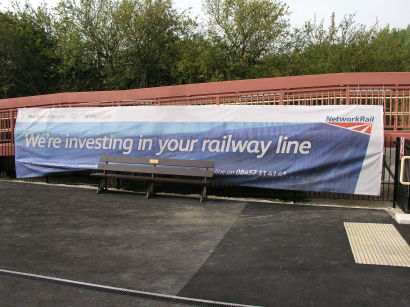A NEWLY published plan says restoring a rail link between Stratford-on-Avon and Honeybourne on the North Cotswolds line would provide a useful addition to the network and has a good business case. Trains would be able to run south of Stratford, a major tourist destination, to Worcester and Oxford and possibly further afield.
The report, prepared by Arup for Stratford-on-Avon District Council, describes the route as a 'promising candidate for reinstatement'. It says that £76 million invested in restoring about 10km of route and building an intermediate station at Long Marston could yield a cost/benefit ratio of better than 2:1, partly thanks to savings in journey time but also because it would provide a boost to tourism and could be used by freight trains.
Restoring the link, some of which would be double track, would also provide an alternative route between Birmingham and Oxford via the North Cotswolds line between Oxford and Honeybourne. Sections of this line have recently been redoubled as part of a £70 million Network Rail scheme.
Passenger services were withdrawn between Honeybourne and Stratford in May 1969 and most of the line closed to all traffic in 1976, although a 4km stub remains in use between Honeybourne and the MOD sidings at Long Marston.
The report points out that since closure 'a number of developments have taken place along the route, such as residential units, business premises and new highway infrastructure. This has added a number of complications and constraints.'
The hurdles which would need to be overcome include the fact that much of the former railway has become a cycleway, and that permission would unlikely to be given for a level crossing to be reinstated south of Stratford station. The cost of the scheme includes building a new cutting at this point to take the track under the road, while the cycleway would be diverted. A new east-facing chord would also be needed at Honeybourne to provide a connection in the direction of Oxford and London.
A local action group is opposing the plans, particularly because the cycleway would be affected. The campaigners are also claiming that there would be environmental disadvantages such as increased noise, although the report says just nine properties would lie within the 55dB(A) noise contour 'which represents the threshold for annoyance'. It adds that the effect on these properties could be reduced by noise barriers.
The next stage may depend on the reaction of the industry. The report recommends that the supporters of the scheme seek a rail industry sponsor and also promote the project with various agencies, including Local Enterprise Partnerships.


